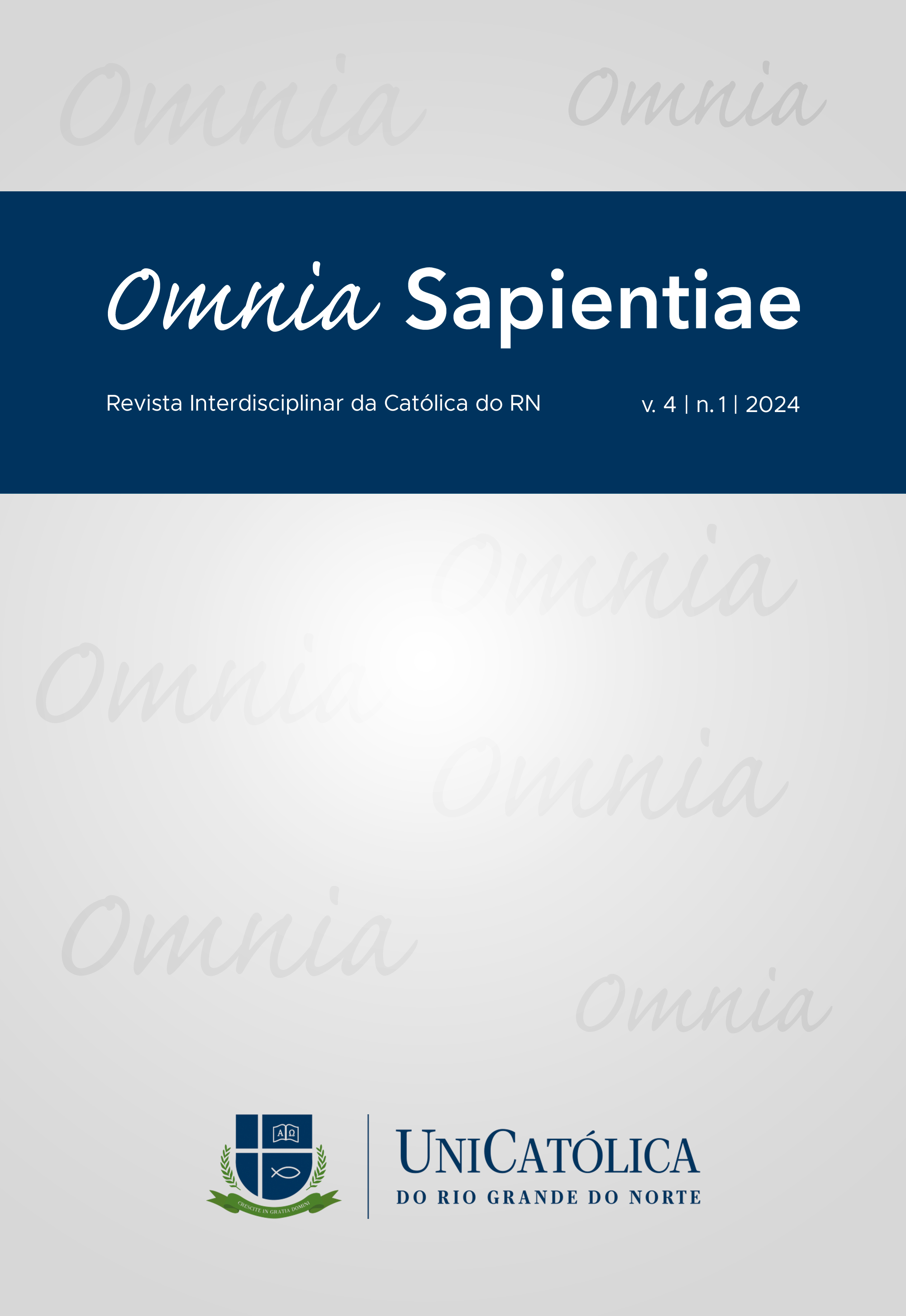BILINGUAL EDUCATION OF THE DEAF OR INCLUSIVE EDUCATION IN A DIGLOSSIA SITUATION IN THE MUNICIPALITY OF MOSSORÓ?
Keywords:
Estudante surdo, Acessibilidade, LibrasAbstract
This article aimed to identify whether the didactics used by the teacher is adapted for teaching deaf students in the municipal network of Mossoró/RN, seeking to describe the difficulties they encounter in the classroom and in the relationship between teacher/student, deaf student/hearing student . , listeners/interpreter, highlighting experiences of four students who are attending elementary school II, observing the teaching strategies that are used by teachers, seeking to suggest didactic means, starting from the need and subjectivity of the deaf student, the first and most important step is the adaptation of the content taught in the classroom to develop the student's learning. After bibliographic and documentary analysis, we realized how difficult the student journey of deaf individuals is. Based on the reports and experiences shared by the deaf, we will present how the lack of accessibility in Libras and inclusion hinder the development and social relationships of this subject, in the school environment, since for the deaf student it is the main place of socialization and construction identity. After the reports, we concluded that there are many obstacles preventing the advancement of quality education for the deaf. We also realize the need for investments, structures and the absence of a Libras teacher and Libras interpreter in schools, considering that many teachers in practice at school they do not have the knowledge or command of Libras to offer greater attention and establish clear communication.
Downloads
References
ALBERTI, Verena. Manual de história oral. 3ª ed. Rio de Janeiro: Editora FGV, 2005.
ARANHA, M. S. F. Integração social do deficiente: análise conceitual e metodológica. Temas em Psicologia, Ribeirão Preto, SP, v. 3, n. 2, p. 63-70, 1995. Disponível em:
http://pepsic.bvsalud.org/scielo.php?script=sci_arttext&pid=S1413-89X1995000200008.
Acesso em: 24 dez. 2022.
BOGDAN. R. e BIKLEN. S. Investigação qualitativa em educação: uma introdução à teoria e aos métodos. Portugal: Porto Editora, 2014.
BRASIL. Lei nº 3.198, de 6 de julho de 1957. Denomina Instituto Nacional de Educação de Surdos o atual Instituto Nacional de Surdos-Mudos. Brasília, DF: Presidência da República, 1957. Disponível em: http://www.planalto.gov.br/ccivil_03/leis/1950-1969/l3198.htm. Acesso em: 24 set. 2022.
FERNANDES, S. O que os surdos adultos têm a dizer aos pais de crianças surdas?. Revista Brasileira de Educação Especial, 2012, 24, 9-20.
FERREIRA BRITO, L. Integração social & educação dos surdos. Rio de Janeiro: Babel Editora. RJ.1993.
FIORIN, J. L. Linguagem humana: do mito à ciência. In: FIORIN, J. L. (org.). Linguística? O que é isso? São Paulo: Contexto, 2015. p. 15-32.
JOSSO. M. C. Experiência de vida e formação. São Paulo: Paulus, 2010.
KELMAN, C. A. Significação e aprendizagem do aluno surdo. In MARTÍNEZ, A. M.; TACCA, M. C. V. R. (Orgs.) Possibilidades de aprendizagem: ações pedagógicas para alunos com dificuldade e deficiência. Campinas: Unix, 2011
MARTINO, L. C. De qual comunicação estamos falando? In: HOHFELDT A.; MARTINO, L. C.; FRANÇA, V. V. (Org.). Teorias da comunicação: conceitos, escolas e tendências. Petrópolis: Vozes, 2001
OLIVEIRA NETO, A. M.; AGUIAR, A. L. O.; GONZALÉZ, D. G. Letramento na educação de surdos: cidadãos do agora construindo um amanhã. Revista EDUCA UMCH, n. 15, 30 jun. 2020.
OLIVEIRA NETO, A. M.; ALBUQUERQUE, E. R. de. Jogos bilíngues como ferramenta didática para a prática do ensino de Língua Portuguesa na modalidade escrita para surdos. The Especialist, [S. l.], v. 42, n. 1, 2021.
OLIVEIRA NETO, A. M.; REIS, B. M. D; AGUIAR, A. L. O. DIÁLOGO E INCLUSÃO: UMA PRÁTICA SOCIAL NO PROCESSO DE ALFABETIZAÇÃO DIGITAL DE IMIGRANTES DIGITAIS. Revista Teias de Conhecimento, [S. l.], v. 1, n. 2, 2022. Disponível em: https://revistas.uepg.br/index.php/teias/article/view/19491. Acesso em: 3 jan. 2023.
OLIVEIRA NETO, A. M. Com a palavra o surdo: a Libras no centro da qualificação profissional. Mossoró. Cactus, 2022.
QUADROS, Ronice Muller de. O professor, o tradutor e o intérprete de Libras. In: QUADROS, Ronice Muller de. LIBRAS: Linguística para o ensino superior. 1º edição. São Paulo: Parábola, 2019. p .175- 180
SÁ, N. P. Cultura, poder e educação de surdos. Brasília, DF: INEP, 2002.
SKLIAR, Carlos. Os estudos surdos em educação: problematizando a normalidade. In: SKLIAR, Carlos. (org.).A surdez: Um olhar sobre as diferenças. 8.ed. Porto Alegre: Mediação, 2016. p. 7-32 .
SVARTHOLM, Kristina. Educação bilíngue para surdos na Suécia: teoria e prática. In: MOURA, Maria Cecilia; VERGAMINI, Sabine Antinialli Arena; CAMPOS, Sandra Regina Leite (Orgs.). Educação para surdos: práticas e perspectivas. São Paulo: Editora Santos, 2008. p. 119-144.
UNIVERSIDADE FEDERAL DE JUIZ DE FORA [UFJF]. Instrutivo para elaboração de relato de experiência. Governador Valadares: UFJF, 2017. Disponível em: https://www.ufjf.br/nutricaogv/files/2016/03/Orienta%C3%A7%C3%B5es-Elabora%C3%A7%C3%A3o-de-Relato-de-Experi%C3%AAncia.pdf. Acesso em: 01 mar. 2022.
VIGOTSKI, L. S. A construção do pensamento e da linguagem. São Paulo: Martins Fontes, 2000.
Downloads
Published
Versions
- 2024-05-04 (2)
- 2024-05-02 (1)
How to Cite
Issue
Section
License
Copyright (c) 2024 Omnia Sapientiae

This work is licensed under a Creative Commons Attribution 4.0 International License.
Omnia Sapientiae adere a uma Licença Creative Commons Internacional (CC BY 4.0). Desta forma fica expressa a permissão para que compartilhem (copiem e redistribuam o material em qualquer formato) e adaptem (remixem, transformem e criem a partir do material), mesmo para fins comerciais, desde que citada a fonte.
Omnia Sapientiae adheres to an International Creative Commons License (CC BY 4.0). In this way, permission is expressed to share (copy and redistribute the material in any format) and adapt (remix, transform, and build upon the material), even for commercial purposes, as long as the source is cited.
Omnia Sapientiae adhiere a una Licencia Creative Commons Internacional (CC BY 4.0). De esta forma, se expresa el permiso para compartir (copiar y redistribuir el material en cualquier formato) y adaptar (remezclar, transformar y crear a partir del material), incluso para fines comerciales, siempre que se cite la fuente.









